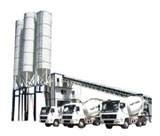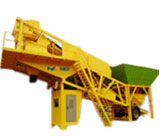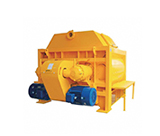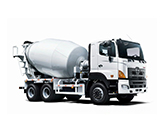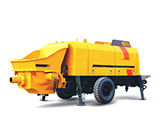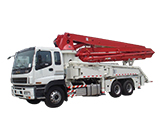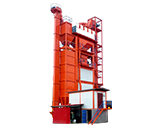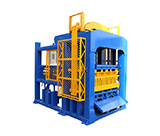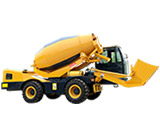What Is On Site Concrete Batching Plant?
2025.06.18
On site concrete batching plant is a kind of equipment that produces concrete directly on the construction site, which can be flexibly configured according to the needs of the project. On site concrete batch plant is used to produce concrete on site. This kind of concrete plant usually includes a mixer, a batching system, a metering system and other auxiliary equipment, which can adjust the proportion of concrete in real time according to the construction needs to ensure the quality and performance of concrete.1. Types of on site concrete batching plants
On-site concrete plant includes both mobile and stationary types. The specific type depends on the needs of the project:
- Mobile concrete batching plant:
It has a movable chassis or modular design, which can be quickly disassembled, transported and reassembled. It is suitable for projects that need to frequently transfer construction sites (such as road and bridge construction).
- Stationary concrete batching plant:
Usually installed on a fixed foundation, with a large production capacity, suitable for long-term and stable large-scale projects (such as high-rise buildings and water conservancy hubs).


2. Structural composition of on site concrete batching plant
The core structure of the on-site batching plant can be divided into the following parts:
- Mixer host:
Type: divided into forced type (suitable for dry hard and semi-dry hard concrete) and self-falling type (suitable for plastic concrete).
Function: Evenly mix aggregate, cement, water and admixtures into concrete.
- Batching system:
Including storage devices such as aggregate silos, cement silos, admixture tanks, and conveying equipment such as belt conveyors and screw conveyors, and accurate measurement is achieved through electronic scales.
- Control system:
Adopting PLC or computer control system, the batching ratio and mixing time can be set, and the production process can be monitored in real time.
- Auxiliary system:
Including water supply system, dust removal device, gas system, etc. to ensure production safety and environmental protection.
- Mobile unique structure:
Equipped with tires, traction devices or container-type frames for easy transportation (such as trailer type mobile concrete batching plants).
3. Output range
The output of the on-site concrete batching plant depends on the model and configuration. The common specifications are as follows:
|
Model |
Theoretical productivity (m³/h) |
Applicable project scale |
|
HZS25 |
25 |
Small construction sites, township projects |
|
HZS50 |
50 |
Medium-sized construction projects |
|
HZS90 |
90 |
Large construction sites, bridges |
|
HZS180 |
180 |
Ultra-large projects |
4. Advantages and characteristics
- High flexibility:
The location can be adjusted or dismantled at any time according to the progress of the project to adapt to scattered or remote construction scenes.
- Controllable costs:
Reduce the transportation costs and losses of commercial concrete, especially suitable for projects near the aggregate production area.
- On-demand production:
Real-time adjustment of concrete mix ratio to meet different strength and slump requirements (such as impermeable and frost-resistant concrete).
- Guarantee of construction period:
Avoid shutdown caused by delays in the supply of commercial concrete and improve construction efficiency.
- Environmental advantages:
Some models are equipped with dust removal and wastewater recovery systems to reduce on-site pollution.
5. Suitable application sites
- Construction sites:
Projects that require continuous concrete supply, such as high-rise buildings and residential areas.
- Infrastructure projects:
Highways, railways, bridges, tunnels (especially in mountainous areas or remote areas).
- Water conservancy projects:
Large-scale water conservancy projects such as dams, reservoirs, and canals.
- Emergency projects:
Post-disaster reconstruction, temporary projects (such as temporary roads and emergency facilities).
- Remote or inconvenient areas:
When commercial concrete is difficult to transport, on-site mixing plants can be produced on site.
The on site concrete batching plant has significant advantages in projects that require on-site concrete pouring through flexible configuration and production mode. The choice of mobile or stationary type should be determined according to the project cycle, scale and site conditions.
Maybe you also like
▶ Previous:HZS50 Hopper Concrete Plant VS HZS60 Belt Concrete Plant
▶ Next:Back To List

